Miniature Bull Terrier
Generally speaking, Miniature Bull Terrier is the same as a Bull Terrier, only smaller. These dogs are muscular and very strong compared to their size. Their official trademark is a large egg-shaped head. They also reflect attributes of the standard variant of the Bull Terrier.
They also go by the name English Miniature Bull Terrier and the Mini Bull. These dogs are tough and loyal to their family. They are athletic dogs that enjoy doing lots of fun activities with their family.
FUN FACT: This dog would definitely win the title of the: "Clown of the Dogs world" if such award would exist.

Height:
10-14 in (25-36 cm)

Weight:
18-28 lb (8-13 kg)

Origin:
Great Britain

Life Expectancy:
11-13 years
Dog Breed Characteristics
Appearance
Except for their larger cousins, you'll never confuse Miniature Bull Terriers for another breed. Both are muscular dogs with square proportions and long, oval heads that curve from the top of the skull to the tip of the nose. They have flat foreheads, sunken eyes, small and thin ears, and black noses with downward slants.
The only real distinction between a miniature and a standard Bull Terrier is size.
Miniature Bull Terriers, despite their small stature, weigh between 18 and 28 pounds, and their muscular builds make them appear just as strong and impressive as larger Bull Terriers.
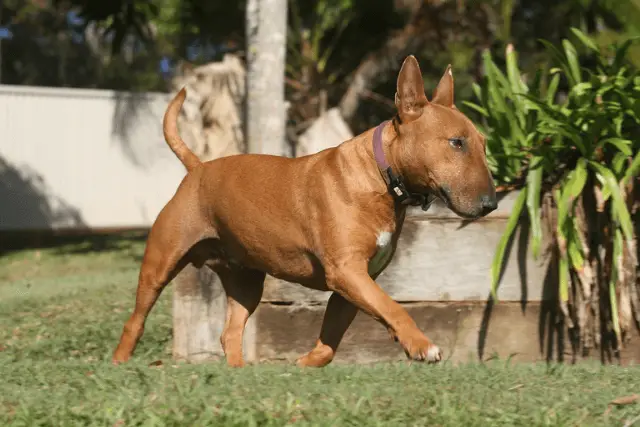
Coat type and color
Their short, flat coats are available in a variety of color combinations, including black, white, red, and tan. The most common color combinations are fawn and white, red and white, white and brindle, and white and fawn.
Temperament
Miniature Bull Terriers are descendants of 19th-century fighting dogs and retain their ancestors' courageous, energetic spirit. Their fighting days are long gone, and they've since been bred to be calm family pets.
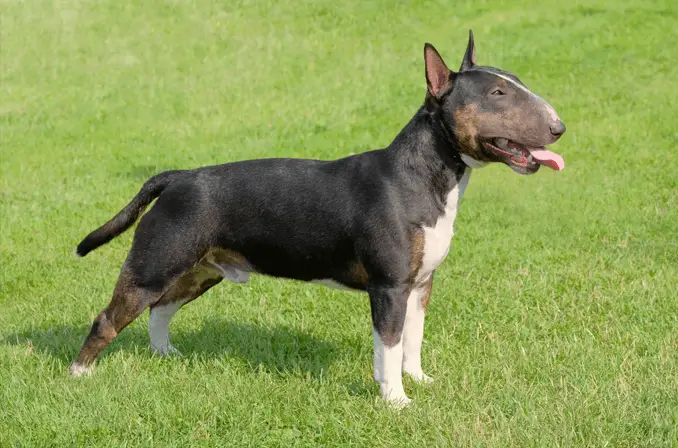
Miniature Bull Terriers are affectionate, playful, and comical with the people they care about. Some owners describe the breed as "curious and quirky," pointing out that these strong, distinct-looking dogs make excellent family dogs. This is the dog for you if you want a dog that will stick to you like glue and follow you everywhere you go.
Miniature Bull Terriers are intelligent and trainable, but they require a significant amount of exercise. These are dogs that need regular walks or runs as well as adequate mental stimulation to keep them calm and well-mannered.
Care guide
Whatever dog breed you have at home, there are certain things you must provide for them. Your Miniature Bull Terrier is no exception. These dogs make excellent family pets, but only if they are adequately cared for.
It is best to consult with your veterinarian, who can help you establish an excellent Miniature Bull Terrier care routine. The following are the most critical aspects of MBT care.
Grooming
Grooming a Miniature Bull Terrier is a simple task. These dogs only require brushing once or twice a week, preferably with a grooming mitt. They benefit from a bath every now and then to keep doggy odor at bay, but you don't have to go to great lengths to keep your Miniature Bull Terrier's coat looking great.
You should be aware that this breed is a moderate “shedder;” some dogs shed less than others, but the short, coarse hairs are bound to end up on your floors, furniture, and clothing. Brushing on a regular basis is the most effective way to keep excess hair at bay.
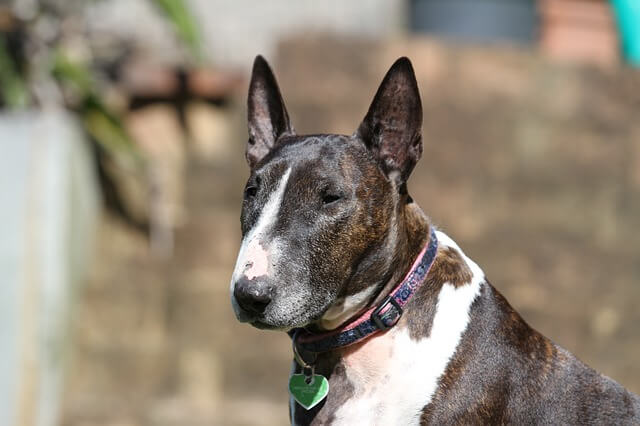
It's also critical to brush the dog’s teeth and trim their nails on a regular basis. Brushing your dog’s teeth regularly will help to keep tartar and bacteria at bay. These things can cause dangerous infections, and brushing your dog’s teeth is the best way to avoid them.
Too long nails can tear, and they may have difficulty healing correctly because they are located on the dog's paws. It is preferable to keep the dog's nails short and neat.
Regular ear checking is another essential part of the grooming routine. Because this breed has erect ears, ear infections may be less common than in the Basset Hound. Nonetheless, checking the dog's ears regularly is an excellent way to ensure the ears are in good condition.
Training
Training a Miniature Bull Terrier will most likely be your greatest joy as well as your most difficult challenge. Owners of an MBT extol their virtues while bemoaning their stubbornness. This is typical of terriers, and the Mini Bull Terrier has a big attitude.
Patient, consistent, and firm training will go a long way toward teaching this tiny terrier to listen to and obey your commands. Enrolling your dog in obedience classes from the start will help establish good pack leadership principles.
Some believe that Bull Terriers are particularly dog-aggressive. Still, other experienced owners believe that proper socialization is essential (as it is with any dog breed). However, it's important to remember that this breed was developed to hunt small game, so their prey drive is strong and may overrule good training on occasion.
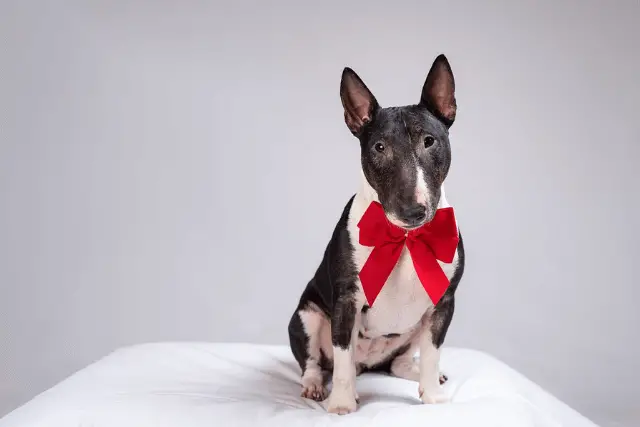
Some owners believe their Miniature Bull Terrier cannot be trusted off-leash, while others believe it is possible, as long as the dog is allowed to choose its own path.
The stubbornness of Miniature Bull Terrier can result in a "shutdown," in which the dog abruptly loses interest in an activity. This mental shutdown can also happen during training or when your MBT objects to a change in routine. These types of challenges require perseverance and determination to overcome, and it's also critical to make training a mentally stimulating activity for your MBT.
Socialization
Because of the possibility of dog aggression, socialization is extremely important in this breed. You should begin socializing your MBT puppy as soon as they arrive at your home. Begin introducing them to various people, dogs, and other animals.
After the puppy has received all of the necessary vaccinations, you can take them to dog parks, where they can explore, play, and learn appropriate behavior. The puppy must have positive experiences throughout this process.
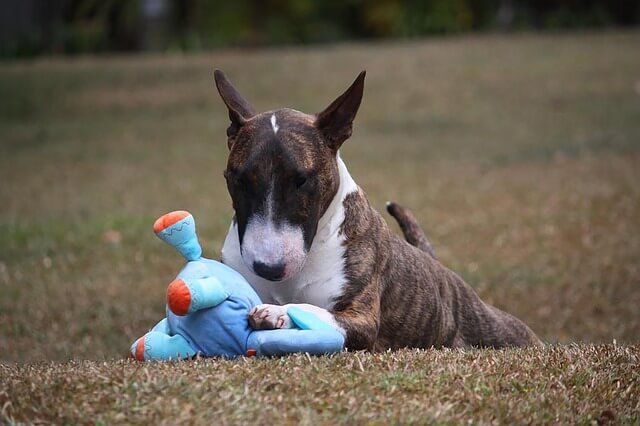
Miniature Bull Terrier and kids
These dogs adore children and make excellent playmates. They are especially fond of their own children. They may, however, be a better option for older children who already know how to play and interact with the dog. Because of their high energy drive, Miniature Bull Terriers can be a bit much for small children.
They may become overly enthusiastic and eager while playing, which may result in injuries and accidents.
Miniature Bull Terrier and other pets
Many Mini Bull Terrier owners report that their dogs get along well with other pets in their homes. These dogs can learn to get along with other pets in the house and even tolerate strange dogs. Some MBTs, on the other hand, will be hostile.
It is critical that the dog is properly socialized from an early age. This can have a significant impact on their temperament, particularly towards other animals.
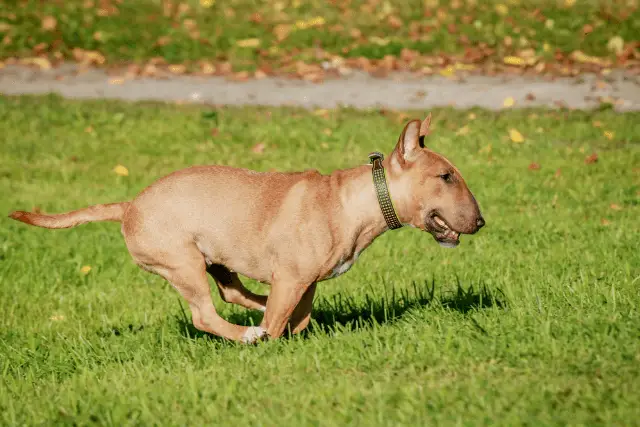
Exercise needs
Keep in mind that these dogs are extremely intelligent. They'll find their own way to keep themselves occupied if they don't get enough mental and physical exercise. Breed enthusiasts frequently describe them as "a 3-year-old in a dog suit," and they'll keep you entertained while also surprising you.
A few long walks each day will help keep your Miniature Bull Terrier fit and out of mischief. These dogs also enjoy athletic challenges such as agility, flyball, rally, etc. Including a variety of activities in your MBT's routine is a great way to keep your dog fit and healthy while preventing boredom.
Health
The Miniature Bull Terrier is a relatively healthy breed. It has a lifespan of 11 to 13 years, and most dogs live without significant health issues. However, this breed is prone to a number of health issues.
Here are some of the problems that veterinarians and owners have noticed in their Miniature Bull Terriers:
- Deafness - Deafness is most common in solid white Miniature Bull Terriers. Still, it has been observed in dogs with a variety of coat colors as well.
- Skin allergies - This breed is prone to allergies, which can be environmental or food-related, resulting in itchy or irritated skin.
- Heart murmurs - This condition causes irregular blood flow inside your dog's heart and can be indicative of other diseases.
- Kidney disease - Kidney diseases can affect one or both of your dog's kidneys. In extreme cases, one kidney may have to be removed. These conditions can result in either acute or chronic kidney disease.
- Patellar luxation - This condition affects your dog's knees, where they meet other bones in the leg, causing the knee to pop out of its normal position. Physical therapy or surgery can be used to treat this condition.
- Glaucoma - In this breed, glaucoma is frequently caused by pre-existing conditions like primary lens luxation (PLL). Glaucoma is a painful eye disease that can result in blindness.
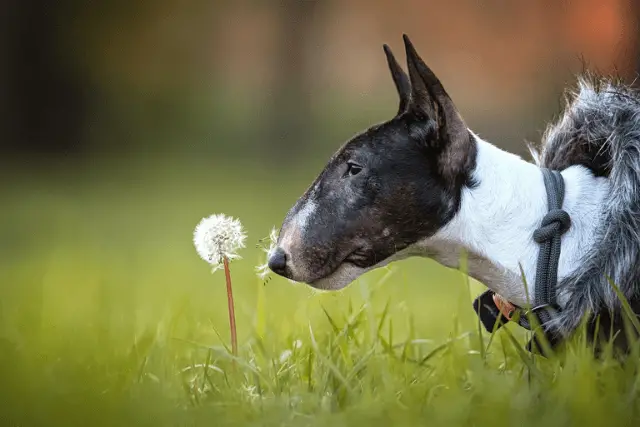
Miniature Bull Terrier breeders
When you've decided that this is the dog breed for you, it's time to start looking for reputable Miniature Bull Terrier breeders. This is an important step in purchasing one of these dogs because good breeders produce healthy, well-behaved puppies.
Naturally, the owner's dedication will play a significant role in the dog's temperament, but getting a puppy from two healthy, well-behaved parents is the best possible start.
SEARCH MINIATURE BULL TERRIER BREEDERS
World Dog Finder team

Updated at31.08.2023.
Breed History
When bull-baiting and dog fighting was made illegal in England, many owners of the bull and terrier breed, which was a popular gladiator, decided to improve the dog's image. They bred for personality and appearance, and they began to compete successfully in dog shows.
Around 1860, James Hinks crossed the bull and terrier with the white English Terrier and the Dalmatian, resulting in the Bull Terrier, an all-white strain. These dogs became popular as fashionable companions for young gentlemen.
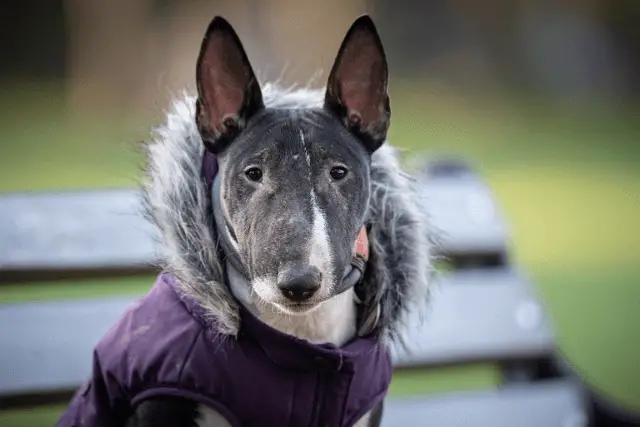
The breed had a wide range of acceptable sizes in its early days. Early on, tiny Bull Terriers as small as 4 pounds were recorded. These toy Bull Terriers were poor specimens and faded from the scene. Still, the slightly larger Miniature Bull Terrier caught on.
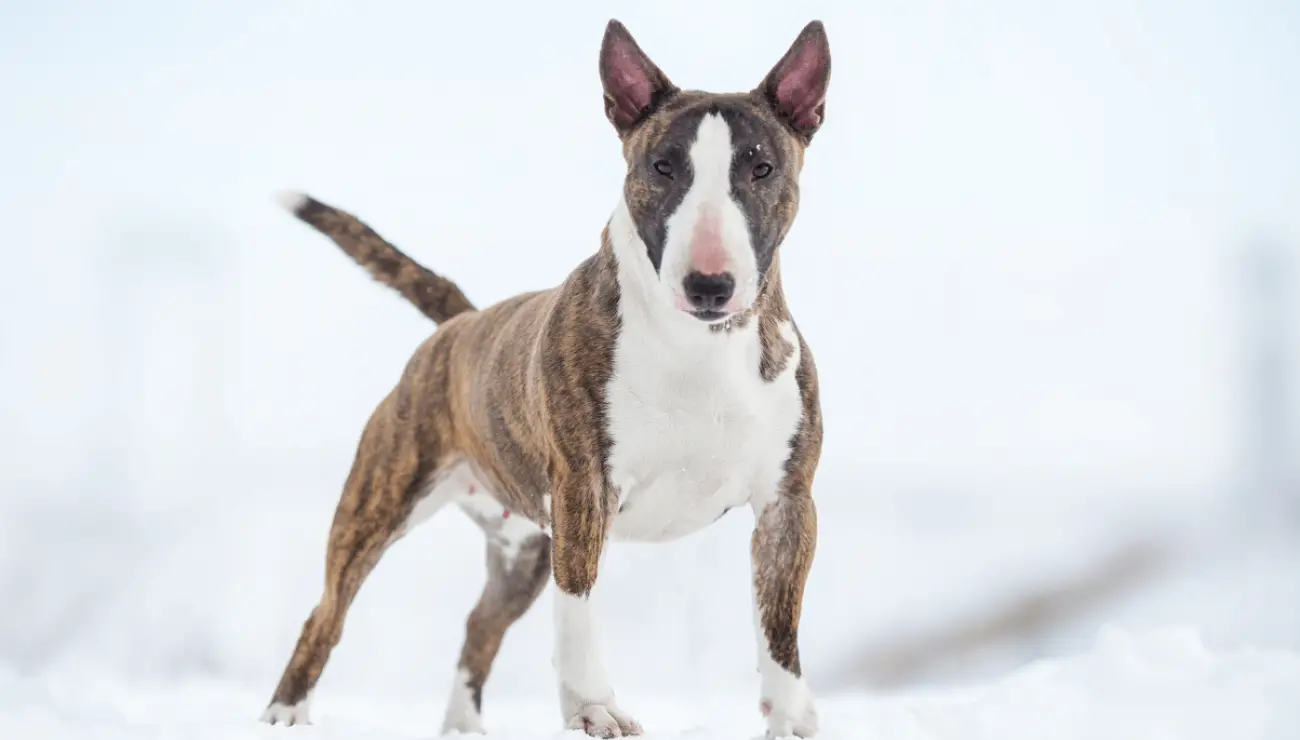
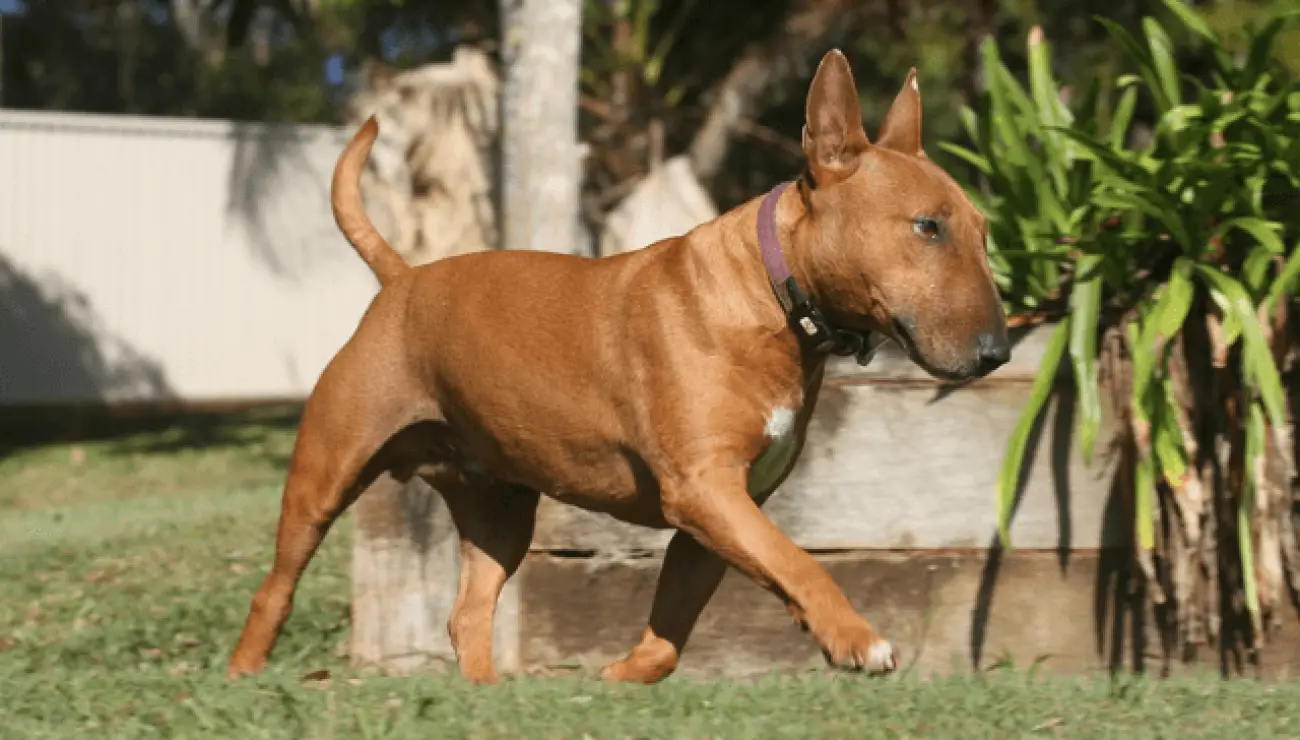
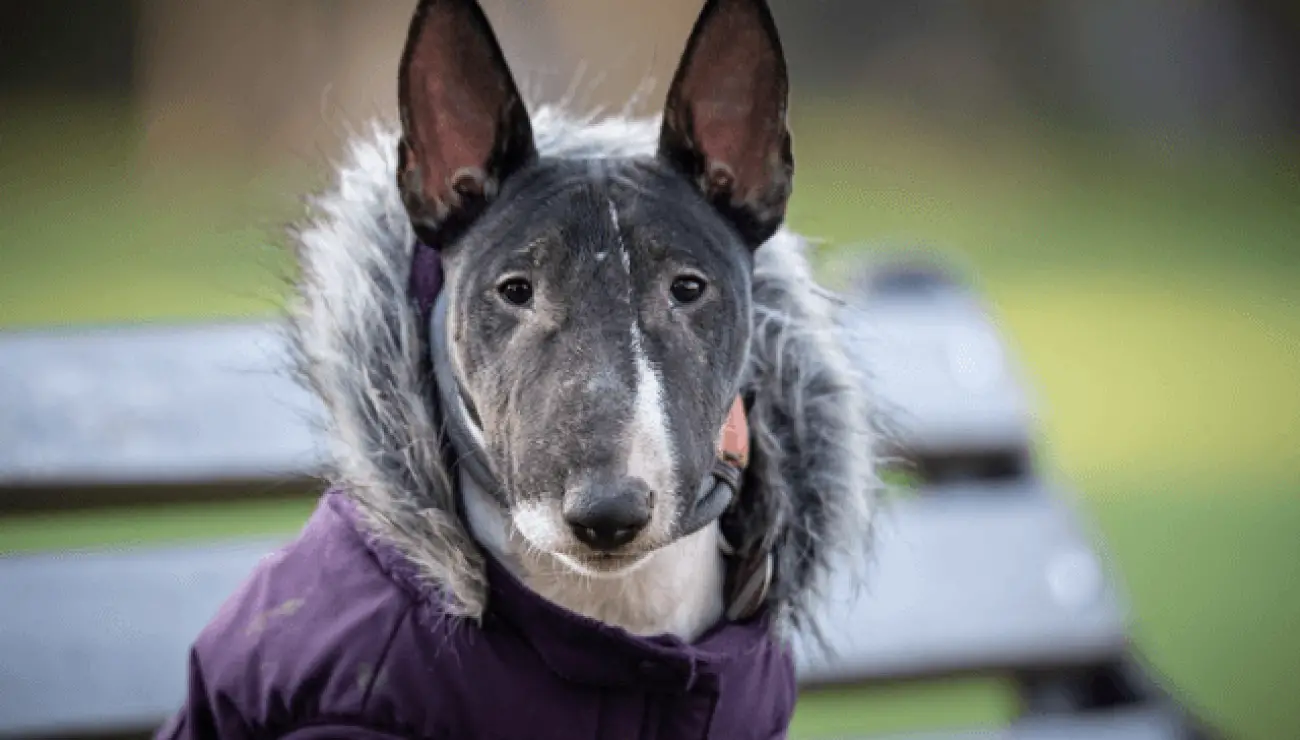
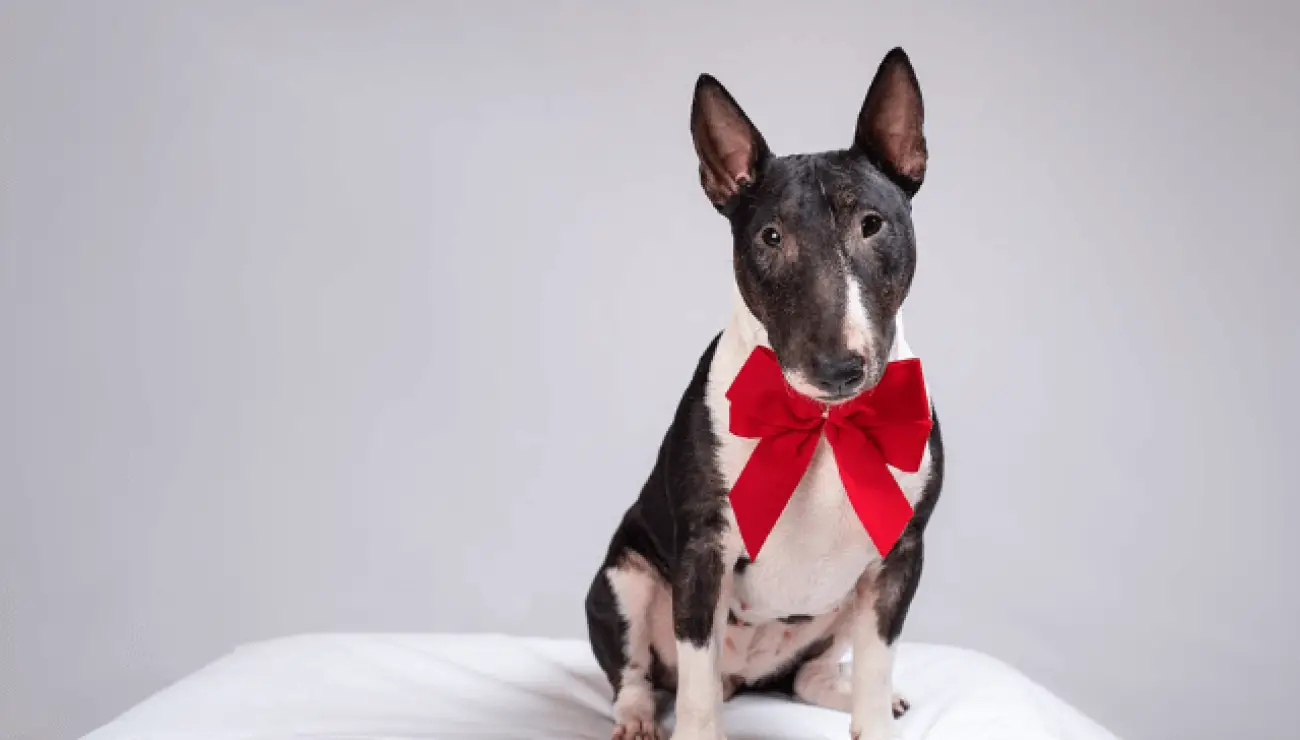
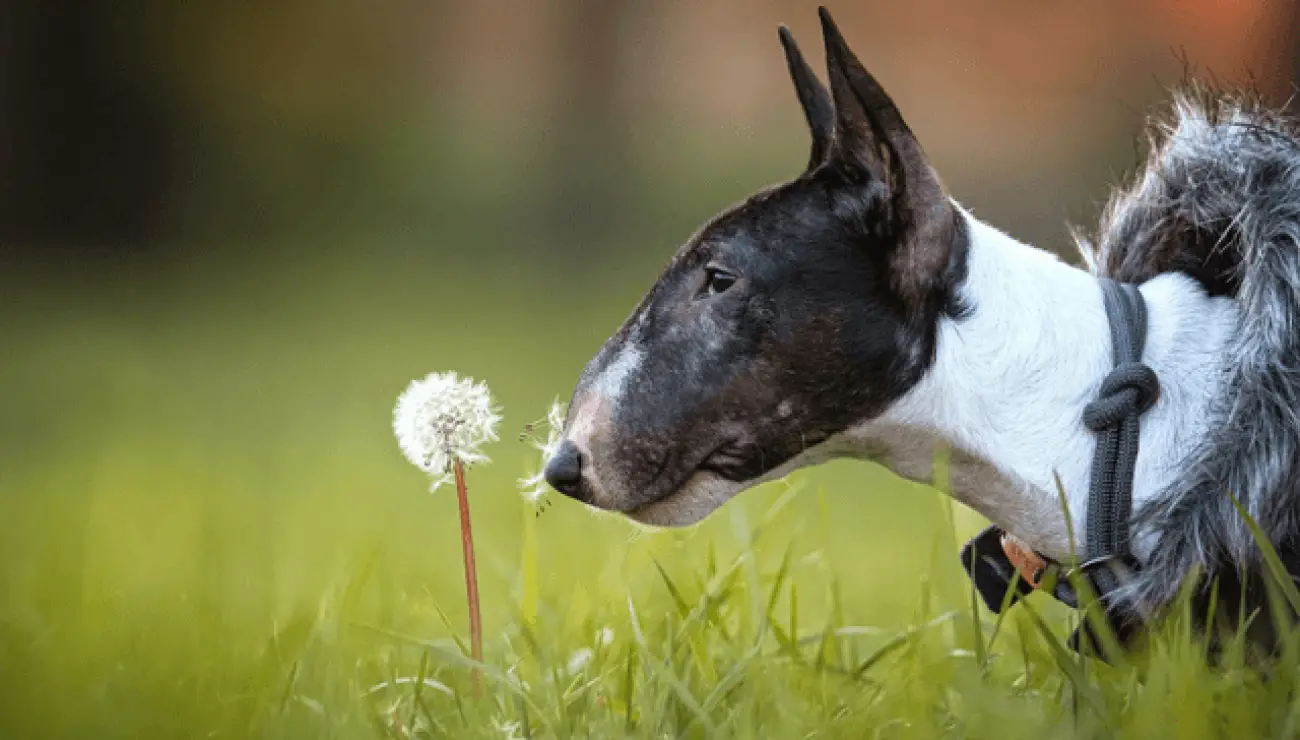
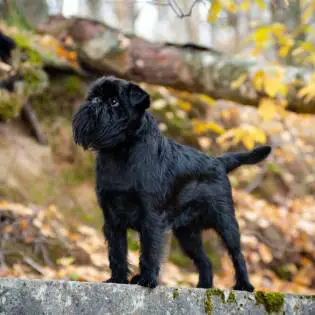
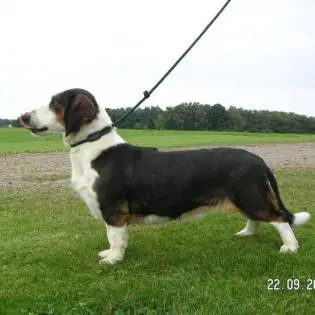
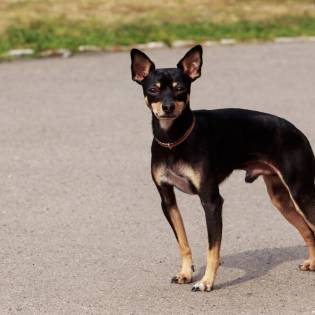
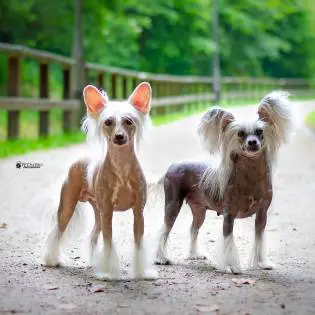
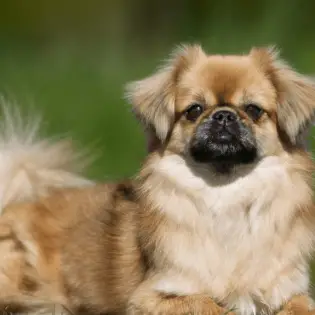
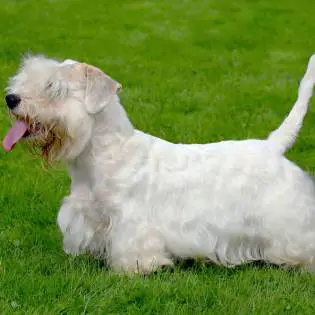
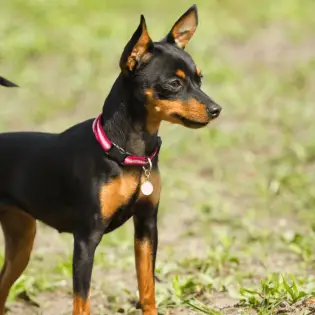

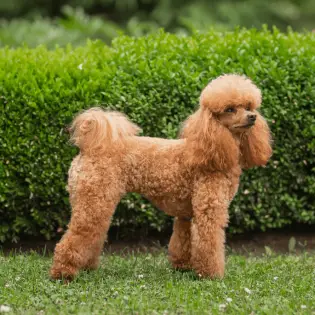
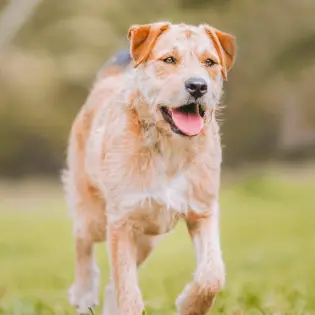

Share